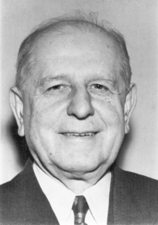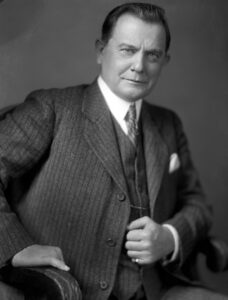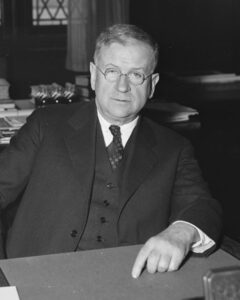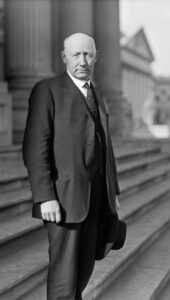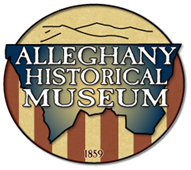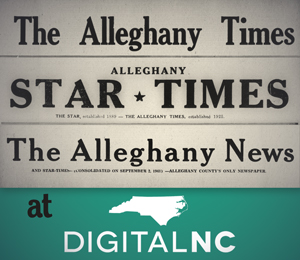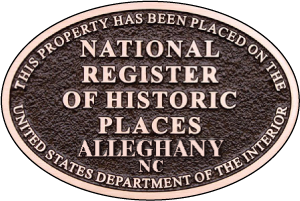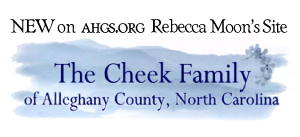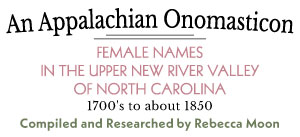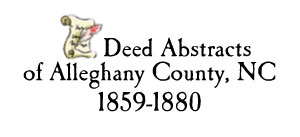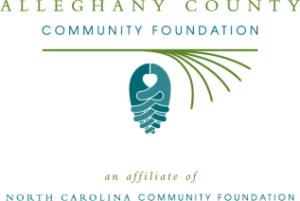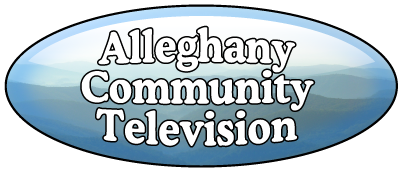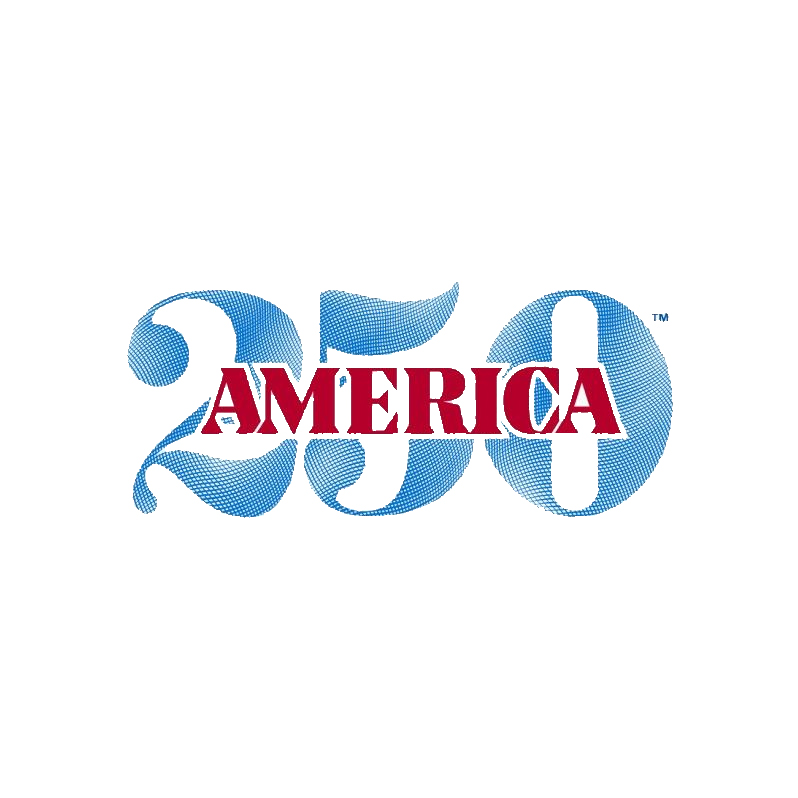While the Blue Ridge Parkway might seem like any other road in the high country— roads that evolved from ancient, native American trails— it is, arguably, anything but.
The 469-mile long “Scenic” as it was called at the beginning, here in Alleghany, might possibly be the most designed, discussed and disputed drive ever to be constructed in America.
The parkway was first proposed in the 1930s to connect the new National Parks at Mammoth Cave, Kentucky; the Shenandoah in Virginia; and the Great Smoky Mountains National Park in Tennessee & North Carolina, but Kentucky was dropped from the plan at some point.
New Deal funding was approved by the Public Works Administration in November of 1933 for this “national parkway” that would connect two national parks.
We, who live equidistant to both parks— the midpoint of the parkway is right here in the county— might think of the Parkway’s location as obvious. Questioning it would be as absurd as that of the sites of the New River or Stone Mountain or the Sphinx.
But, let’s consider time before our beloved road… before any blasting or grading began; before the building of the bridges, the overlooks, the fences or the trails; before the meticulous landscaping— down to the installation of individual trees and shrubs (!)— even before any land was acquired, a route had to be determined and decided upon.
This formidable dilemma was to be resolved only at the highest levels of the federal government.
From the beginning, the route through Virginia was reasonably undisputed, but by early 1934, Tennessee and North Carolina had already initiated what would become a contentious battle for the southern half of the parkway.
Tennessee wanted it to veer to the west, near Lexington, Virginia, continue to Damascus, then head south to Unicoi, Tennessee, and finally on to Gatlinburg— Tennessee’s “western gateway” to the Smokies.
North Carolina, however, wanted it to follow the path that essentially exists, today.
While politics surely influenced the final decision of Secretary of the Interior Harold Ickes (and Franklin Roosevelt. Conventional wisdom says Bob Doughton, powerful chairman of the House Ways and Means Committee, privately agreed to support the Social Security Act if Mr. Roosevelt gave NC the parkway) the very public battle for the parkway was one of oratory— a noble debate of economics and engineering and, of all the intangible and subjective things, “scenic beauty.”
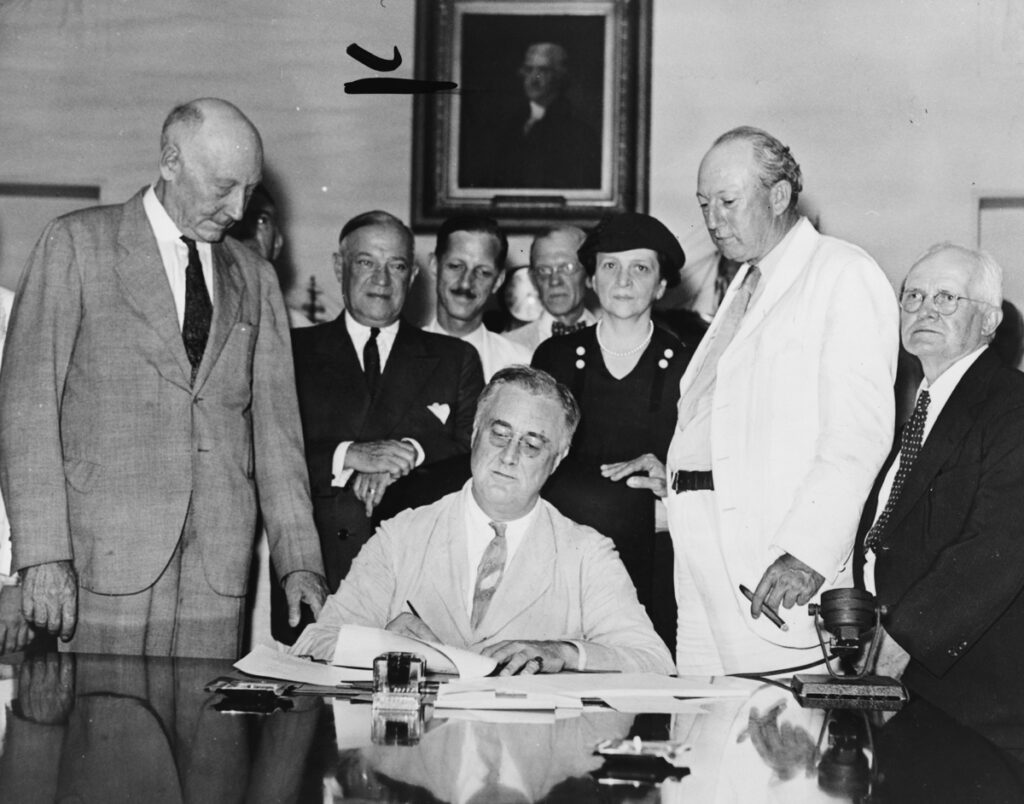
-from the Prints and Photographs division of the Library of Congress
In February of 1934 a committee appointed to determine the Parkway route (Regional Public Works Administrator George Radcliffe, chair; NPS Director Arno B. Cammerer; and federal Bureau of Public Roads Chief Thomas H. MacDonald) held a hearing in Baltimore to determine the merits of the two states’ proposals.
North Carolina sent a 26-person delegation that included Governor J.C.B. Ehringhaus, Senator Robert Rice Reynolds; Senator Josiah William Bailey; Congressman Robert Lee Doughton and most of the state’s congressional delegation; R. Getty Browning, chief location and claim engineer for the NC State Highway Commission; Commission Chairman, E. B. Jeffress and developer George Stephens of Asheville. For over three hours, the North Carolinians presented their case.

NC Senator Josiah W. Bailey from the Biographical Guide at the US Congress website;
NC Senator Robert Rice Reynolds from the Biographical Guide at the US Congress website; and Congressman R.L. Doughton, from the Doughton Collection at the Alleghany Historical Museum.
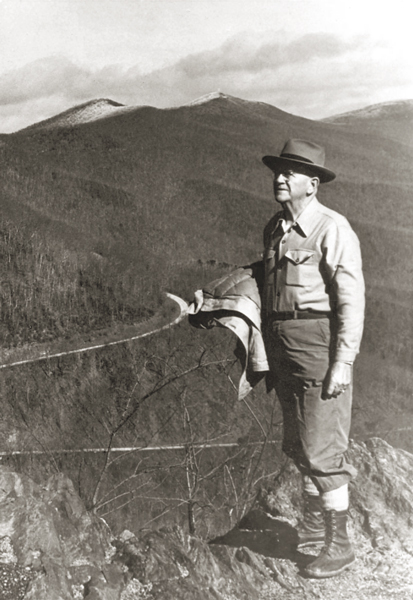
Mr. Browning trekked the ridgelines of the Blue Ridge to find the optimum route and made the recommendations regarding the geography and the view-sheds.
He was called to Washington, where he presented a persuasive argument to Harold Ickes for what became the route of the Blue Ridge Parkway.
–National Park Service. Photo Courtesy of North Carolina State University
North Carolina Group Scores At Parkway Hearing
Delegation Favorably Impresses PWA Committee
Proposed W. N. C. Route Submitted
Scenery In This State Is Stressed By Tar Heel Speakers
BALTIMORE Feb. 1934—Assisted by questions from Mr. Jeffress and Senator Reynolds, the engineer [Browning] developed from maps and otherwise, that territory on the Tennessee proposed route was undulated and irregular— up and down over broken country, resulting in more hill climbing than on the Carolina route.
He estimated the [Carolina] road would be 200 miles long from Low Gap through the Grandfather mountain section to Mt. Mitchell, the Craggies, Mt. Pisgah, and thence to the Balsams and the Smoky park. It would not touch Asheville, he explained, but would run 5 or 6 miles to the southward. From Low Gap, he said, the road would average 3,000 feet in altitude to Grandfather, from there to Mt. Mitchell 4,000 feet and from Pisgah to the park nearly 5,500 feet. It would follow a gradual ascent to the Smokies, he said, while if diverted toward the Tennessee park entrance, the route would be a gradual descent. The Tennessee route has innumerable cuts and hills, he explained, with far more crooks and turns…
Senator Reynolds said that he represented not only the state of North Carolina but the American Automobile association of which he is vice-president. In his customary rousing oratory the senator, his arms waving violently, said the “hills of Western Carolina are like a Persian rug” when clothed in their autumn colors. “Tennessee was once a part of my native county of Buncombe,” he cried. “When the division came we gave them the swampy lowlands and kept the beautiful mountains.”
The senator said the American tourists each year spend billions of dollars. A total of 300,000 persons, he said, visited the Great Smoky park [in 1933.]
Congressman Doughton urged Mr. Radcliffe and associates to see “that beautiful country.” “Nature fixed the place where that road should be,” he contended, adding that the mountain country was a place for restoring health as well as a beauty spot…
Senator Bailey declared that the matter before Mr. Radcliffe “is not a matter for compromise. It is a matter of building to an idea.”
North Carolina has had only $3,000,000 of PWA funds whereas the state has paid to the federal treasury more tax money per capita than any other state except New York he said. He made mention of Tennessee’s benefits from the TVA and pleaded with Mr. Radcliffe and his associates to “come and see what we have. It would be a travesty on all that scenery means not to include Mt. Mitchell in this plan. We invite every comparison and we beg you not to compromise. Build a scenic highway.”
——
“I never recall a presentation made in a more graphic or interesting manner,” said Gilmore D. Clark, consulting landscape architect whom the government has employed in connection with the proposed parkway, after the North Carolinians had presented their arguments.
February 7, 1934 Asheville-Citizen Times
Gilmore D. Clarke would later design the Unisphere for the 1964 New York World’s Fair.
When it was Tennessee’s turn in the meeting-
Routing the Parkway, 1934
Senator Kenneth McKellar presented his state’s case with accusations of bias and favoritism within the federal committee and threats to use his influence in Congress to withhold funding for the road were it not located to his liking. Halfway through Tennessee’s allotted time, General Frank Maloney of the State Highway Department rose to pick up the pieces after McKellar’s disastrous speech. Maloney detailed the possible advantages of Tennessee’s less-elevated route: relief from mountain driving, the beauty of the stream-side sections, and the improved camping opportunities that a mix of high and low elevations might offer.
Driving Through Time: The Digital Blue Ridge Parkway at docsouth.unc.edu
State Seeks ‘Fair Share’ In Park Road
Tennesseeans Tell About Lower Route Along River Valleys.
BALTIMORE, Feb. 7-The two United States senators from Tennessee today demanded that their state receive a “fair share” of the proposed scenic parkway to connect the Shenandoah and the Great Smoky Mountains National parks. The route they recommended to a committee of public works, national park and federal roads officials would give Tennessee the southern 100 miles of the route and the “main entrance” of the park at Gatlinburg, Tenn. Having heard the arguments of the three states most vitally interested, Virginia, North Carolina and Tennessee, the engineers and landscape architects who will make the route recommendation tonight planned an actual survey of the proposed routes in the immediate future.
Senator Kenneth McKellar, who had charge of the Tennessee argument before the committee this morning, told the committee that if Tennessee did not get as much of the parkway as North Carolina, the proponents of the parkway would have “a rocky road to travel.”
“You haven’t got the money yet,” the Senator said.
Saying that he had read that the government experts already had decided on an all-North Carolina route from Virginia to the park, the Senator pounded upon the table and demanded to know why Tennessee highway authorities had not been consulted; why the experts had been working in North Carolina alone. Gilmore Clark, national parks service representative, and George L. Radcliffe, head of the committee conducting the bearing and chairman of the public works regional advisory committee, both denied this.
February 7, 1934 Knoxville Journal
The next day, editors at the Asheville Citizen replied to the Tennessee Senator:
Senator McKellar’s Outburst
Senator McKellar’s attack upon the Regional Board of Public Works Administration in Baltimore yesterday was, of course, utterly preposterous and shockingly out of place. It can be explained only on the theory that the Tennessee Senator, realizing that on its merits the parkway route urged by North Carolina is unassailable, is seeking to make the location of the route a political matter pure and simple.
North Carolina has asked only that the parkway be so routed as to conform to the idea which lay behind its inception, that it shall be in the truest sense of the word, a Scenic Parkway. North Carolina knows where the mountains, which such a parkway must embrace, lie…
It knows, as Congressman Doughton declares, that “you can’t carry the scenery to the road; you must carry the road to the scenery.”
Senator McKellar is angry because he wants the parkway carried away from the scenery and is evidently convinced that this is not on the cards. His outburst was most unseemly and many of his constituents will doubtless blush for him when they read of it; but his outburst was a remarkable tribute to the manner in which North Carolina’s representatives at Baltimore presented their case and a still more remarkable testimonial to the inherent merit of that case.
February 8, 1934 Asheville Citizen

-Image taken from the National Park Service, Blue Ridge Parkway Headquarters.
https://docsouth.unc.edu/blueridgeparkway/content/8682/
An expedition into the mountains-
Parkway Officials Lay Plans For Inspection
Expect To Spend Week Or More Looking Over Routes
Eight federal officials and six state officials of Virginia, North Carolina and Tennessee will begin an intensive survey of the routes proposed for the $16,000,000 scenic parkway connecting the Great Smoky Mountains and the Shenandoah National parks, Friday, May 18, it was learned yesterday.
Following the interference by bad weather of two former survey attempts of the routes…
APRIL 27, 1934 ASHEVILLE-CITIZEN TIMES
Party Of State And Federal Officials To Spend Wednesday Night At Blowing Rock On Trip Over Proposed Highway Route
Headed by George L. Radcliffe and Theodore E. Straus, special advisors on public works to Secretary of the Interior Ickes, the federal and state parkway inspection party of about sixteen is expected to arrive at Blowing Rock this (Wednesday) afternoon and will spend the night at that place.
The inspection party, which is traveling in eight automobiles, visited Mt. Mitchell yesterday and today have traversed the Grandfather Mountain country, in an effort to map out an exact location for the magnificent 200 foot roadway which has been authorized to connect the Shenandoah National Park in Virginia with the Great Smokies National Park in North Carolina and Tennessee.
May 24, 1934 Watauga Democrat
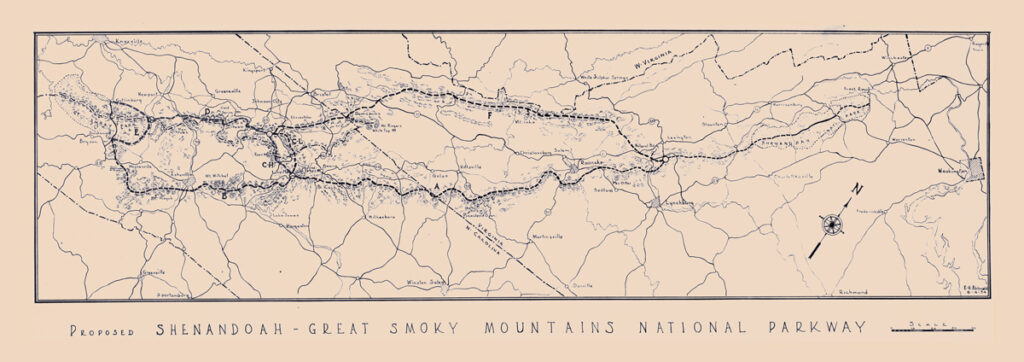
This map by Edward H. Abbuehl was created June 4, 1934, and shows routes favored by both North Carolina and Tennessee.
-Presented courtesy of the Libraries of the University of North Carolina at Chapel Hill. The larger, original file can be found at the UNC’s Driving Through Time web site, here: https://dc.lib.unc.edu/cdm/singleitem/collection/blueridgem/id/1644
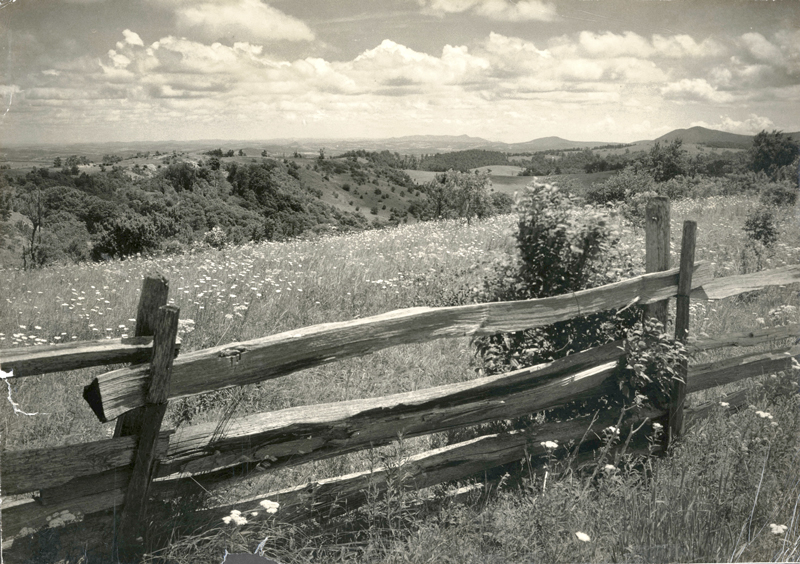
Photo courtesy National Park Concessions, Inc.
Good tidings for Carolina-
Location Scenic Road Pleasing
Congressman Doughton Is Confident That Route Of Park-To-Park Highway Will Be Satisfactory To Watauga County People
A press-time telegram from Congressman Bob Doughton to the editor states that he is confident that the location of the Park-to-Park Highway will be satisfactory to residents of Watauga County. Mr. Doughton, who has been a prominent figure in national highway work for many years, has had many conferences with Secretary of the Interior Ickes, and his efforts on behalf of Northwest Carolina in the matter of locating the scenic roadway are thought to have resulted in adoption of a route thru Alleghany, Ashe and Watauga counties.
Mr. Doughton’s brief telegram states:
“Confident location of Parkway will be satisfactory to Watauga people. (Signed) R. L. Doughton, M. C.”
Washington observers state that there is little doubt in the capital but that the parkway will follow the above-mentioned route as far down as Linville Gorge. The conflict in rumors is said to begin here.
One report has it that the Park Service recommends that the Parkway cross over into Tennessee just below the gorge and enter the Smoky Mountains National Park at Gatlinburg.
Another rumor is that Parkway will run in the form of a loop after leaving the Linville Gorge section. This would take in the scenery around the Craggies, Mount Mitchell and Asheville, with the other side of the loop running to the Tennessee side and entering the park at Gatlinburg.
June 14, 1934 Watauga Democrat
Secretary Ickes had decided the parkway’s path southward. From the Lexington/Lynchburg area, it would head toward Roanoke and enter North Carolina at Roaring Gap in Alleghany County. It would follow the Blue Ridge southwest to Glendale Springs in Ashe County and then on to Linville Falls via Blowing Rock and Grandfather Mountain.
But the battle continued. Tennessee wanted what they thought was a reasonable right turn at Linville into their state, past Roan Mountain and into Unicoi, before heading south to the Smokies.
North Carolina wanted it to continue on to Mt. Mitchell, and around Asheville to Cherokee thus giving NC its own “Gateway to the Smokies.”
That the fight for the Parkway to conclude its extension on south through North Carolina has just begun, was indicated today by Representative Robert L. Doughton, of Laurel Springs, who is chairman of the North Carolina committee which is managing the campaign.
“It appears to me that the logical route for the further extension of the Parkway is through North Carolina,” said Mr. Doughton. “I have already called upon the Park Service and officials at the Department of the Interior, of which Mr. Ickes is secretary and given notice that North Carolina will urge the Western North Carolina route to the last. For the parkway to veer west, now, by way of Roan Mountain, would deprive the traveling public of seeing the most picturesque and enchanting mountain scenery in the world. As soon as the matter is reached, the North Carolina committee will be ready to meet the issue.”
August 2, 1934 Watauga Democrat
A month later, an economic argument out of Chapel Hill-
The Scenic Parkway Route
The North Carolina route is geographically superior, but, were it only equal to the Tennessee route, fairness would demand that it be chosen.
First, because the western counties of North Carolina have long been dependent upon the tourist trade, which is not true of the Tennessee counties.
Second, because the state of Tennessee has already received far greater benefits, from the expenditure of Federal money on public works, than have been received by North Carolina.
Not long ago Senator McKellar of Tennessee boasted that in the last year or so the Government had put nearly $300,000,000 into public works in his state while in the same period the state had contributed only $12,400,000 to the support of the Government. That statement was for his constituents, and no doubt they were pleased with it. But what is to be said of it from the point of view of people outside of Tennessee? Certainly there is nothing in it to excite pleasure in the people of the neighboring state of North Carolina which has been singularly unfortunate in respect to the expenditure of Federal money within its borders.
In the 48 states North Carolina ranked 45th, last year, in the allotment of Federal emergency grants and allotments, on a per capita basis. The allotments and grants to Tennessee in the last fiscal year came to $35.39 per capita; to North Carolina, $18.09 per capita.
Tennessee has the western entrance to the Great Smoky Mountains Park. Surely the eastern entrance should be through North Carolina.
August 31, 1934 Chapel Hill Weekly
North Carolina musters its army-
Expect 200 On Parkway Train From This State
Many Others Will Join N.C. Delegation At Capital
When the North Carolina special train, bound for the parkway hearing in Washington Tuesday afternoon, crosses the Virginia state line tomorrow night, more than 200 North Carolinians will be aboard, prepared to show Secretary of the Interior Harold L. Ickes that the scenic highway between the Shenandoah and Great Smoky Mountains national parks should traverse Western North Carolina.
The special will leave Asheville station at 7 o’clock tomorrow evening and will arrive in Washington Tuesday morning at 7:30 o’clock. The hearing will be conducted in the Department of the Interior auditorium at 2:30 o’clock Tuesday afternoon, and several hundred delegates from both North Carolina and Tennessee will be present to discuss the merits of the two routes proposed from Blowing Rock to the Smoky park…
As a courtesy to all members of the Western North Carolina delegation going to Washington for the parkway hearing, the Citizen-Times company has reserved for their use and convenience in the national capital on Tuesday ten rooms and a parlor at the Mayflower hotel…
A special Raleigh Pullman, bearing Governor and Mrs. Ehringhaus and other state officials, including highway department representatives, will be attached to the special at Greensboro. The train… will have 11 cars, including nine Pullman coaches, one day coach and a club car…
The special will take on authorized delegates at all stops between Asheville and the Virginia line. For instance, Spindale and Rutherfordton delegations, will entrain at Marion. There will be delegates at Black Mountain, Old Fort, Marion and Rutherfordton- the Chamber of Commerce was assured yesterday- and other wires from still other stations are expected tomorrow morning…
Hendersonville Group To Have Special Car… 25 go from Haywood… Waynesville to send Large Delegation… Ten Spruce Pine Citizens to Attend… 12 Burke Citizens to be in Delegation… Five Will Go From Cherokee County… 9 From Yancey… Swain County Will Send 7…
In addition to those who make the trip by train, approximately 50 persons from this section will go to the capital by motor…
——
Doughton will Join State’s Delegation
Mr. Doughton is much interested in the parkway and is supporting North Carolina’s claim to the route…Mr. Doughton said, “It is a scenic and unique parkway- not a commercial highway, and is to be built purely for recreational purposes. North Carolina certainly has the claim and I will do all I can to see that it is located in North Carolina where it should be.”
Asheville Citizen-Times
The sides meet… battle lines are drawn-
WASHINGTON, Sept. 18 For more than three hours this afternoon, Secretary of the Interior, Harold Ickes, listened intently while a dozen orators from North Carolina and Tennessee renewed their plea for preference in selection of a route for the Southern Appalachian parkway to connect the Great Smoky Mountains National Park and the Shenandoah National Park.
The auditorium of the Department of Interior building was crowded far beyond capacity and more than 150 persons stood around the walls…
In the Tar Heel contingent there were approximately 400 persons, a number of whom were unable to find standing room in the auditorium. The Tar Heels outnumbered the Tennesseans more than two to one.
September 19, 1934 Asheville Citizen
The Knoxville Journalists had a different estimate:
Ickes Takes Case Of Parkway Road Under Advisement
Says Suit Important
M’Kellar Declares Secretary’s Own Board Approved Two-State Roadway
Governor M’Alister Makes Strong Plea
Taylor Cites Fact Park Bill Was Introduced By Tennessee Solons
North Carolina boosters slightly outnumber the Tennesseans at today’s hearing, but both states had notable delegations. These appeared to be 150 or more from North Carolina and almost as many from Tennessee, but judged by the cheering in the auditorium the Tarheels were in the majority.
Each state was allotted an hour and a half. Governor McAlister, Senator McKellar, Senator Bachman, Representative J. Will Taylor and Highway Commissioner Frank Webster carried the Tennessee banner, while the North Carolinians were represented by Governor Ehringhaus, Senators Reynolds and Bailey; Representative Doughton and State Highway Engineer Browning.
September 19, 1934 Knoxville Journal
North Carolina, by a coin toss, won the right to open the debate:
Ickes Hears Appeals Of Speakers For This State And Tennessee
Browning, Reynolds, Doughton, Bailey, Lathan And Page Urge Routing Of Highway Through This Area
Secretary May Make Personal Inspection Of Proposed Routes
Tennessee Bases Its Case On Report Of Radcliffe Committee; Crowd Packs Auditorium For Hearing
Mr. Browning, the first speaker, explained with the aid of a long pointer, the maps he had prepared. One of the maps showed the parkway elevation in relief. “I think our route more nearly meets the requirements of the parkway than any other,” he said…
North Carolina’s idea… was for the parkway to run along the sides of the highest mountains and not the tops. The plan of his state, he contended, would cost less in excavation and would require fewer cuts and fills.
September 19, 1934 Asheville Citizen-Times
Doughton’s appeal-
[Congressman] Doughton, visibly moved by the importance of the occasion, said the North Carolina plan for the route if adopted would mean money wisely spent. “All the bills on it referred to it as a scenic parkway and not as a connecting road,” he said. “If this road misses Grandfather Mountain and Mt. Mitchell, future generations would deplore the mistake that was made.
“There is nothing in America to compare with the scenic grandeur of that section,” he continued. “If this is to be a scenic highway, then there can be not the slightest doubt as to which route it should take. I urge you to go and see what it is for yourself. I don’t see how there can be any reasonable doubt on the matter.”
Mr. Doughton said he had been born and reared near the crest of the Blue Ridge. He pointed to the map and showed where for 20 years in his younger days, he had traveled through the mountains on horseback. The people there have been neglected for years, he said, as the industrial development had concentrated on the valleys.
“The only way you can help them is to bring this great development to them. That is their home and you cannot move them to the lowlands. We should be glad to show you what Tennessee pays into the federal treasury and what Tennessee has received from the government and what North Carolina pays into the federal treasury and what she has received, but of course, we don’t want to bring that in. If Tennessee was as fair as she is beautiful, there would be no need for holding this meeting. All we ask is that the parkway be located so as to conform to the purpose for which it was created.”
September 19, 1934 Asheville Citizen-Times

-Presented courtesy of the Libraries of the University of North Carolina at Chapel Hill. The larger, original file can be found at the UNC’s Driving Through Time web site, here: https://dc.lib.unc.edu/cdm/ref/collection/blueridgem/id/710
When it was Tennessee’s turn, Governor McAlister introduced their state highway commissioner, Frank W. Webster, who declared that their Unaka mountains “are more rugged and splendid than the Blue Ridge.” He said the principle point of argument was that Mr. Ickes had appointed a commission to decide a route for the road… “These men were experts, employed by the government and I think their recommendations should be followed.”
General Kennedy, the next speaker for Tennessee, said, “if you want scenery you wish it on both sides of the road. Our route would give you a view of mountains on both sides. They say they have had tourists for 100 years. Isn’t it natural for some of their tourists to filter into Tennessee? They speak of their section as ‘the Land of the Sky.’ They own the land and now they have an idea that they own the sky also.”
September 19, 1934 Asheville Citizen-Times
And Tennessee was just getting started-
Representative J. Will Taylor of Tennessee spoke next. “I appreciate the very high privilege of appearing on this program this afternoon,” he said.
“I think I speak the sentiment of the entire citizenship,” said Mr. Taylor. “We think this great program should be undertaken in a spirit of cooperation like that manifested in establishment of the two parks.”
He labeled North Carolina’s attitude “greedy.”
“We claim the honor of having initiated that great park,” he said. “Senator McKellar [of Tennessee] introduced the bill in the Senate and I introduced the companion bill in the House.”
Congressman Taylor paid tribute to W. P. Davis, of Knoxville, who was the real father of the Smoky Mountains park idea, he said. Mr. Taylor said North Carolina presented a beautiful map and that it was fine from the standpoint of artistry, but lacked accuracy as to scale and otherwise.
“We are claiming it our route strictly on its broad scope and merit,” said he. “If the salubrious climate in North Carolina is as described why should North Carolina citizens be constantly moving into Tennessee?” he queried.
——
Senator McKeller followed with a vigorous speech in which he brought to light for the first time, the engineers’ report of Mr. Ickes’ committee approving the Tennessee route.
Senator McKellar launched into a history of the park project. He told how, nearly 10 years ago, he proposed the first bill ever presented in Congress for the creation of the park. He recited all the steps and told how he and Senator [Claude A.] Swanson, of Virginia, had finally collaborated in a single bill bearing both their names. This was the first law ever passed on the subject.
Looking directly at Secretary Ickes, Senator McKellar told of the various steps he had taken to make the park and the parkway a reality and he read a telegram exchanged between himself and Governor McAlister at Nashville Indicating cooperation.
He referred to this correspondence and other things in the record indicating it was ‘’not a one-state proposition.” Senator McKellar added: “It is not a two-state proposition; it is a three-state proposition. We don’t want any advantage over our friends In North Carolina. We merely want an even break.”·
——
The Tennesseans played a trump card when Senator McKellar produced and read an engineer’s report, made to Secretary Ickes [in] June, recommending the Virginia-North Carolina-Tennessee route, beginning on the southern boundary of the Shenandoah National park, and practically following the state line between North Carolina and Tennessee into the Great Smoky Mountain National park, for the entire distance.
This report was never approved. Had it been there would have been no necessity for [the] September hearing. The only reason given for an appeal from this report has been that the scenery was less beautiful than that of the route which lies entirely within the borders of North Carolina.
September 19, 1934 Knoxville Journal
Senator McKellar’s argument was just short of a challenge to Secretary Ickes’ authority and might have been unwise. His claims would come back to haunt him.
Tennessee Senator Nathan L. Bachman inserted a little humor:
“Carolina is entitled to her proportionate share of this highway, so that she may show the lavish beauty nature has endowed her with. We are proud of North Carolina and take pleasure in our relationship, but for all our adulation we do not think North Carolina should treat her daughter as a stepchild, and a red-headed step-child, at that.”
September 19, 1934 Knoxville Journal
Senator Bailey of NC was allotted 20 minutes to answer the Tennessee speakers:
“We have undertaken to present this solely on its merits,” he said…
He scoffed at the assertion [made by Commissioner Webster] of the Unaka mountains being equal in loveliness to the Blue Ridge. “We appeal to you as one to make a verdict, not for Tennessee or North Carolina, but for one hundred and thirty millions of people in this country and for generations to come.
“Where are all the hotels? In Tennessee or North Carolina? To what places do the people of other sections come when the summer sun drives them from home? To Tennessee or North Carolina? Why, bless their souls, even the Tennesseans do not feel they are near enough to heaven until they come to our mountains.
“When the speaker a few minutes ago said you looked out from the tops of Carolina mountains to lowlands of red clay, he proved one thing very definitely: That he had never been there. It is not red you see; it is green.
Senator Bailey was given a wild ovation by the Tar Heels as he took his seat.
September 19, 1934 Asheville Citizen-Times
The judge went into deliberations-
At the conclusion, Secretary Ickes, who sat patiently through the three-hour discussion, occasionally reminding participants of their remaining time, said that he would “try to determine this question strictly on its merits after I have had time to get sufficiently far away from the eloquent pleas made on behalf of the state.” The Secretary added that he would “read the record and try to arrive at a decision which shall be fair and just.”
He then paid this tribute to the quality of the speeches: “I do not blame you people for coming here and listening to these statesmen pitted against each other. You have doubtless heard them many times before and anticipated the treat you have enjoyed here.”
Secretary Ickes said he would not undertake to say when the decision will be made. “It is too vital to make a hasty decision.”
September 19, 1934 Knoxville Journal
By November, Secretary Ickes had made his decision, favoring the Carolina route. Here are excerpts from his announcement:
WASHINGTON, Nov. 13— After a careful study of various reports on the proposed route of the Shenandoah-Great Smoky Mountains national parks highway, as it affects the states of Tennessee and North Carolina; after listening to arguments presented at the hearing held in the interior building, Washington, on September 18, 1934; after studying the maps and reading the briefs offered; and after considering reports made to me by members of this department who, at my instance, made personal inspections of the two routes, I cannot escape the conclusion that the decided weight of the evidence is in favor of the so-called North Carolina route. Heretofore I have already determined the route from the Shenandoah National Park running west through the state of Virginia and across North Carolina as far as Blowing Rock in the latter state. My further decision is that the route from Blowing Rock to the Great Smoky National park shall follow approximately the route suggested by the proponents of the so-called North Carolina route…
——
Of the several considerations that led me to this conclusion, the most influential was the circumstance that Gatlinburg, Tennessee, already has a recognized and well-established entrance to the Great Smoky national park. This fact of itself did not determine my decision in favor of the North Carolina route…
——
If then, from the scenic point of view, the North Carolina route is no less desirable than the Tennessee route, it seems to me that, in all fairness, we should take into account the fact that Tennessee already has, through Gatlinburg, an entrance into the Great Smoky National park. It surprised me at the time of the hearing that this point was not more strongly stressed by the proponents of the North Carolina route. Reference was made to it by two or three of the speakers, but not as if it were a matter seriously to be urged. It was noted that the advocates of the Tennessee route did not even mention Gatlinburg as a present well-established entrance to the park. Arguing for a right equal to that of North Carolina to share in the tourist traffic that is expected to be attracted to this park, they chose entirely to overlook the fact that even with the scenic parkway traversing North Carolina from the Virginia line and entering the park at Cherokee, Tennessee would still have a gateway into the park equally, if not more important than that which North Carolina will have at Cherokee…
——
Through Gatlinburg will flow the tourist traffic from the great west and northwest. Some 73,000,000 people already dwell in the area west of the Allegheny mountains which is tributary to the Gatlinburg entrance, while the area east of the Allegheny mountains, from which access to the park will be through the Cherokee gateway, contains approximately 50,000,000 people. Here is a present disproportion in favor of the Gatlinburg entrance of 23,000,000 people besides which it is reasonable to expect that the growth in population of the country tributary to the Gatlinburg entrance will be much greater than in that section which will naturally seek the Cherokee entrance…
——
If, as Tennessee insists, there was such a bargain between the contending states for that part of the scenic highway west of the Virginia line, the United States was no party to it and is not bound by it. The United States has a paramount interest in this scenic highway. It is to become the property of the United States. It is to connect two national parks, title to which now is or will be in the federal government. Moreover, while the right of way is to be donated by the states, according to the understanding between the United States and the interested states, the road itself, which it is estimated will cost some $16,000,000, is to be financed solely by the United States.
The United States has never entered into any understanding or made any bargain with any of the states involved, beyond assuming the obligation to build and take over the highway if the states should provide satisfactory rights-of-way. The federal government reserved the right of final determination of the route. The state of Tennessee cannot be heard to argue that, without the knowledge or consent of the federal government which was to supply the money, it made a bargain with the state of North Carolina for any particular route. My own recollection is that representatives of the states of Virginia, Tennessee and North Carolina came to me, as administrators of public works, to propose this scenic highway. I was told that each state would be willing to provide to the federal government, free of cost, whatever land it might desire for such a highway. My understanding was that we would be free to call upon Virginia, Tennessee and or North Carolina for such land for a right of way as we might decide upon. The decision against this parkway would have been instant if I had been asked to favor, without investigation, a route which was the result of a bargain on a fifty-fifty basis between the states of Tennessee and North Carolina. Since the government would not have been interested in such a proposition if it had been disclosed, it cannot be bound by it if it was undisclosed.
From the first, it was understood by all concerned, including the representatives of Tennessee, that what was proposed to be undertaken, with the aid of the federal government, was the construction of a scenic highway. That term means to me the most scenic highway possible, consistent with avoidance of cities, relative directness of route, and ability to build at a reasonable cost. I find that the route proposed by Tennessee meets the requirements of a scenic highway. I find, however, that the route proposed by North Carolina is a more scenic route than the one proposed by Tennessee…
——
Moreover, while I subscribe to the views expressed at the hearing that North Carolina is not entitled to special consideration as the second largest contributor of internal revenue taxes to the federal treasury (it being self-evident that North Carolina does not pay these taxes itself but merely collects them from users of tobacco everywhere throughout the United States), the fact cannot be ignored that through the Tennessee Valley development, the United States is investing many millions of dollars in Tennessee for the economic rehabilitation of that state, while it is doing nothing comparable in North Carolina.
How can a decision like this be equitable? How can scenic beauty be quantified? How can there be fairness on a scale this massive with so many variables?
It is impossible.
But 90 years after, what are the results?
According to the Park Service, in 2023, the Great Smoky Mountains was the most popular National Park with a total of 13,297,647 visits. And a majority of those entered through the Tennessee side. Gatlinburg and Pigeon Forge take in over a billion dollars each year.
So providence has granted Tennessee’s request for equity— Senator McKellar’s “even break”— in heaping measure.
——
Visitors to the Blue Ridge Parkway in 2022 spent nearly $1.3 billion in communities near the park. That spending supported 17,824 jobs in the local area and had a cumulative benefit to the local economy of $1.7 billion.
In 2023, the Blue Ridge Parkway was the most popular of all National Park Service sites with a total of 16,757,635 visitors.
In fact, since 1946, the Blue Ridge Parkway has been the most visited site in the entire national park system.
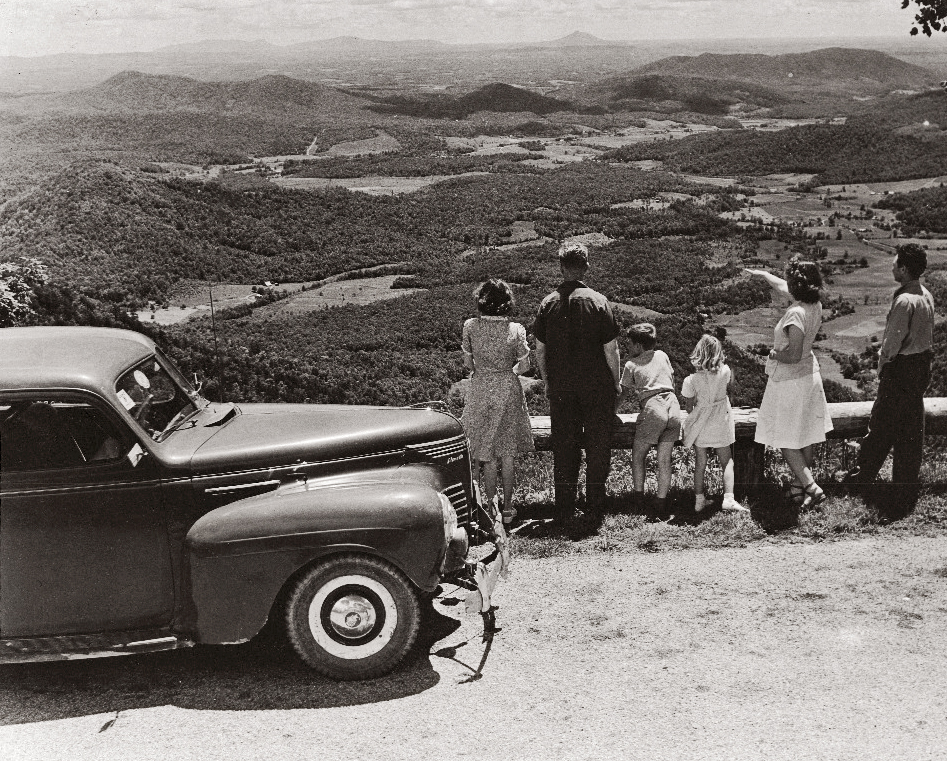
Courtesy National Park Service, Blue Ridge Parkway
https://docsouth.unc.edu/blueridgeparkway/content/5937/full/
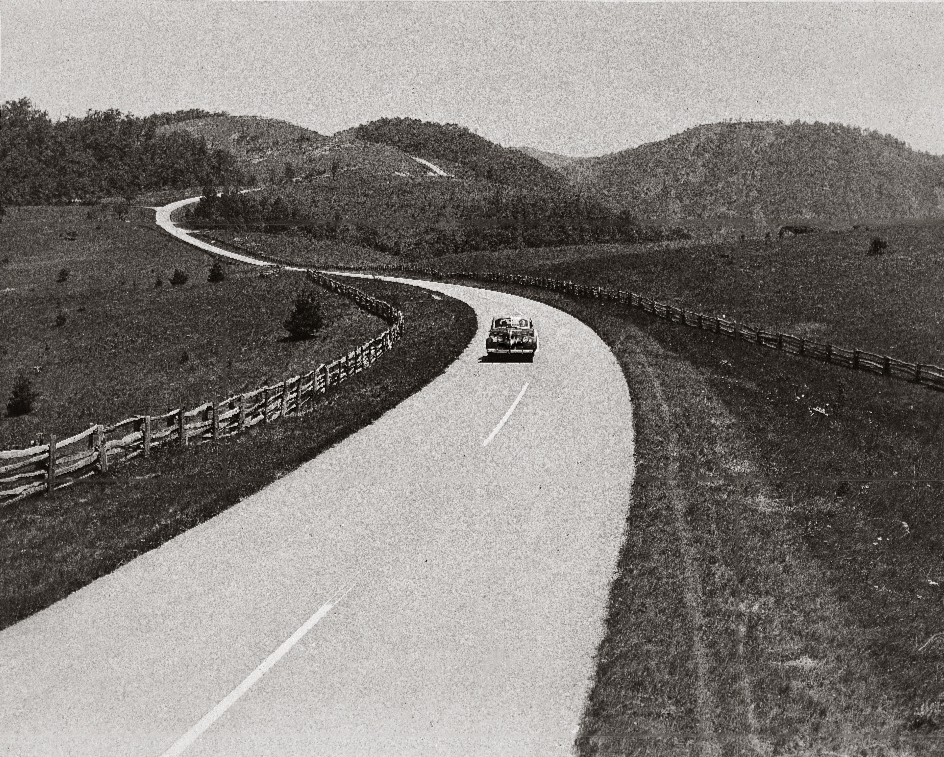
Image taken from the National Park Service, Blue Ridge Parkway Headquarters and taken by Abbie Rowe. Courtesy National Park Service, Blue Ridge Parkway
Original at: https://docsouth.unc.edu/blueridgeparkway/content/5948/full/
—–
Thanks to Steve Sudderth for the idea and the University of North Carolina’s web site, Driving Through Time, The Digital Blue Ridge Parkway.

